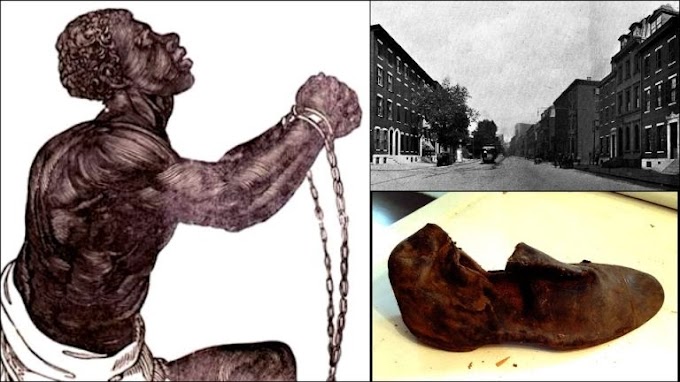In Yoruba cosmology, Osun was said to have metamorphosed into a river as a result of a misunderstanding between her and “Oba”, a co-wife of Sango. The Osun River takes its source from Igede-Ekiti, flows through Ilesha to Osogbo town and empties itself in the Atlantic Ocean. Her “waters of life” are strongly believed to have healing, divination, protective and fertility powers. But it is also believed that the goddess inhabits the grove while the river meanders within the grove called the Osun-Osogbo Sacred Grove.
The early Osogbo people were Ijesha from Ipole-Omu in Obokun area where they were faced with harsh living conditions of drought and famine which prevented them from abundant water for farming and domestic use. This condition tempted them to want to migrate to a better area for more comfortable living. In search of a better condition of life, Olutimehin the renowned elephant hunter discovered the grove during one of his hunting expeditions. Having discovered the grove, reported back to Larooye the King and suggested that Larooye should establish his kingdom in the grove, Larooye was the Owaroki (King) of Ipole-Omu, a settlement built on a hilly area surrounded by a trench dug to protect the community from attacks by other tribes. It is important to state that King Larooye 1 who was already reigning with the title Owaroki have been ruling a thriving community at Ipole-Omu. This implies that Osogbo people, kingship and tradition including their culture pre-date the present site. This means that Osogbo people did not begin or exist historically from the present site. They have existed right from Ipole-Omu and carried their cultural traditions and other paraphernalia from their original abode to the present site and location of both Osun riverside and Ode-Osogbo.
Until the early nineteenth century Osogbo played practically no role in Yoruba politics. Situated upon the old Oyo/Ijesha boundary, the town stood in the shadow of ilesa. With the collapse of Oyo and the subsequent struggle to fill the resulting powers: the Fulani coming from the north advancing southwards and the Ibadan marching northwards, determined to stem Fulani armies clashed in around 1830 in the Legendary battle of Osogbo, during which the Ibadan troops defeated the Fulani army. In Osogbo itself, the defeat is credited not to military strength of Ibadan army but to power of Osun. According to one version, Osun gave warning of an imminent Fulani attack by making a carving fall in Osun shrine at the palace. Other versions tell how the deity turned into a food vendor who sold the Fulani poisoned bean cakes, which killed many in the Fulani army and successfully ended its advances.
These successes of the past are acknowledged and renewed annually by the Osogbo community during what is now called the Osun-Osogbo international festival. Year in year out, the annual OsunOsogbo international festival keeps recording new dimension in the areas of attendance and planning of the event. In spite of the influence of the Western Culture and Religion, the festival has to a very reasonable extent maintained its originality, authenticity and acceptability among nations worldwide
Tourists from far and near, both foreign and non-foreign devotees’ participant, corporate partners, irrespective of their religious beliefs, equally add more glamour to the yearly celebration of the festival. The celebration of the annual Osun-Osogbo festival transcends various eras right from when it was only known to the Yoruba people of Nigeria down to this day when the cultural festival has now gained world acclaim and even celebrated beyond the shores of Africa. Osun- Osogbo festival which is internationally recognised is synonymous with the Ataoja of Osogboland who is the custodian of the festival. The popularity and robust nature of the festival can be attributed to many factors which makes the celebration transcends beyond idol worshipping (which is an erroneous belief of some people)
The personal commitment of Austrian born late Suzanne Wenger-Iwinfunke Aduni Olorisa, towards the protection and upholding of the values of the festival had great effect on the popularity of the festival worldwide. Secondly, the encouragement of the Ataoja of Osogbo land who is the custodian of Osun-Osogbo shrine and the local people equally supported Suzanne Wenger to form the new sacred art movement with which she challenged land speculators, repelled poachers, protected shrines and brought back to life the once deteriorating sacred grove establishing it as the sacred heart of Osogbo
The Federal Government declaration in 1965 of the entire 75 Hectares of the sacred grove as a National Monument finally put the grove and the annual festival in its rightful place on the list of important national events in the country. The Federal Government endorsement of the festival thus opened up Osogbo township and gave residents and foreigners/tourists the opportunity to recreate socially, culturally as they re-enact one of their renowned age-long spiritual and communal festivals. Indeed, the Osun- Osogbo festival has been and is still one of the most outstanding, preserved and carefully sustained cultural practices of the various festivals in Nigeria and Africa as a whole
Another major achievement which catapulted the festival into the world heritage map was recorded in July 2005 when the Osun grove was declared a World Heritage Site (WHS) by the United Nations Educational Scientific and Cultural Organization (UNESCO) having acknowledged the importance of the Grove and the festival to the Yoruba Nation in its entirety. With this all-important declaration, the Osun Osogbo festival finally took its pride of place among several other annual cultural festivities celebrated all over the world attracting tourists, researchers, worshippers and journalists from all parts of the world including members of Odua People’s Congress (OPC) led by the Odua Co-ordinator, Otunba Gani Adams, as well as the Eyo Masqueraders who usually add colour to the yearly celebrations of the festival
It is worth mentioning that Osun-Osogbo festival has been with us since the founding of the city (Osogbo) itself and has always been a source of spiritual refreshing for thousands of foreigners who come from all over the world every year to participate in it. As it has turned out, Oshun and everything attached to it constitutes the core of Osogbo and form the archetype of the people. Oshun is largely regarded to be the creativity and prosperity of its people. Although, Osogbo is the home of Oshun, the deity is worshipped throughout the Yoruba land and in diaspora which makes the festival unique, as the deity, her potency and efficacy reverberate all through the lands where she is worshipped.
Osogbo stands tall as the city remains the proud host of an international festival of over increasing fame, gravity and grandeur which is fast turning into a staunch source of wealth for the growing state of Osun, especially in the areas of culture, recreation and tourism.
Reference
Osun Osogbo festival '' Nigeria's centenary edition 1914-2014 being an unpublished
brochure of His Royal Majesty Oba Jimoh Oyetunji 48-50
Kindly Share Our Post, Thank you.








0 Comments